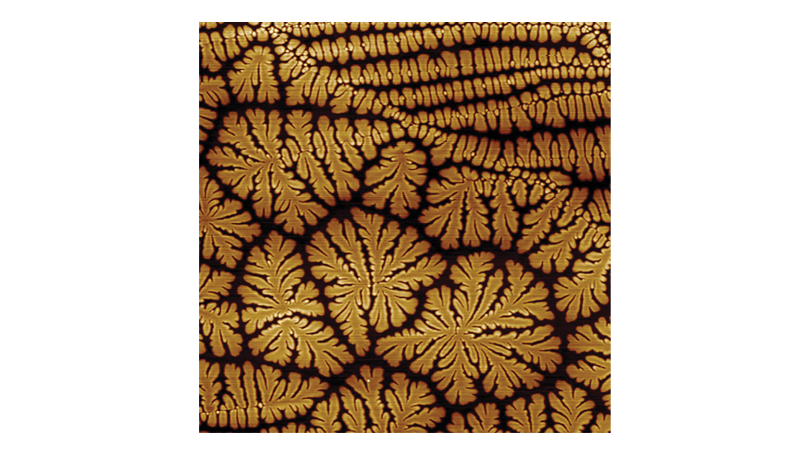Controlling MOFs ZnO heterostructure kinetics through selective ligand binding to ZnO surface steps
Chemistry of Materials 2020
In this freshly published article, AFM is used to investigate the interplay between organic ligands and substrates during the crystallization of metal-organic frameworks (MOFs). In-situ AFM experiments were performed by TappingMode on a Bruker MultiMode AFM in aqueous solutions continuously flowing through the liquid cell at 30°C and 60°C. This allowed the research team at Pacific Northwest National Laboratory (PNNL) to visualize the kinetics of dissolution pits and extract nucleation and growth rates. Imaging forces were kept low (~50 pN) to ensure that there was no measurable effect of the AFM tip on the particle number density and growth kinetics. The experiments showed that a specific linker-step and linker-terrace interaction is due to energetically favorable configurations. These specific interactions lead to a deterministic means of controlling the dissolution kinetics of a substrate and therefore the growth kinetics of the outer layer.

